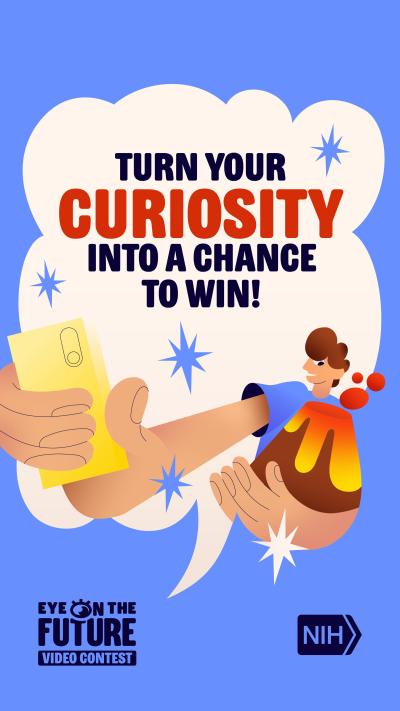
The competition received over 120 submissions from young scientists nationwide. Students in grades 9–12 submitted a short video in one of three categories: exploring science in their world, science in action, or science in their future.
Four high school students have been selected as the grand prize winners of the fourth annual National Eye Institute (NEI) Eye on the Future teen video contest.
"Encouraging the next generation to pursue careers in science not only showcases the ingenuity of our young people but also builds a vital network for future scientific discovery,” said Michael F. Chiang, M.D., director of the NEI, part of the National Institutes of Health.
An estimated 93 million adults in the United States have a high risk for serious vision loss. At the same time, the prevalence of refractive errors, including myopia, is increasing in the U.S. and worldwide. “Recruiting and inspiring a talented workforce is crucial to fulfilling our mission of eliminating vision loss and improving quality of life through vision research," Chiang said.
The competition received over 120 submissions from young scientists nationwide. Students in grades 9–12 submitted a short video in one of three categories: exploring science in their world, science in action, or science in their future. The winning videos were selected by a committee of NIH and volunteer experts based on four factors: scientific context and accuracy, relevance, engagement, and creativity. The grand prize winners from each category will receive a $2,000 cash prize.
About the Winners
Science in Your World
Jack Lynch (11th grade) - The Whitfield School, St. Louis, Missouri
Winning video: Eyes on the water: How bass and bluegill vision can lead to sustainable fishing
About the video: My video explains how bass and bluegill fish see the world differently from humans and how this understanding can help raise awareness, create sustainable fishing practices, and assist conservation efforts.
Science in Action
Akshara Srinivas (9th grade) - Eastlake High School, Sammamish, Washington
Winning video: Hammerhead shark inspired vertical axis wind turbine
About the video: My video explains the science behind using hammerhead shark adaptations called tubercles to improve the energy capture efficiency of wind turbine blades. Computational fluid dynamic simulation results and physical experiments to back them up show the futuristic potential of biomimicry as a science.
Science in Your Future
Muhammad Fawwaz and Maxwell Grace (10th grade) - South Iredell High School, Statesville, North Carolina
Winning video: Artificial intelligence (AI) eye and cane: Assisting the visually impaired using deep learning neural networks
About the video: Our video highlights the AI Eye and Smart Cane, innovative assistive devices designed to help visually impaired individuals navigate their surroundings with confidence. Powered by a Raspberry Pi and an AI-based image recognition model using deep learning, the system detects and identifies objects and obstacles in real time, then informs users about their environment through text-to-speech technology. Our goal is to empower users with greater independence through accessible, AI-driven solutions.
To view the winning submissions after June 6th and more information about Eye on the Future, visit www.nei.nih.gov/EyeOnTheFuture.